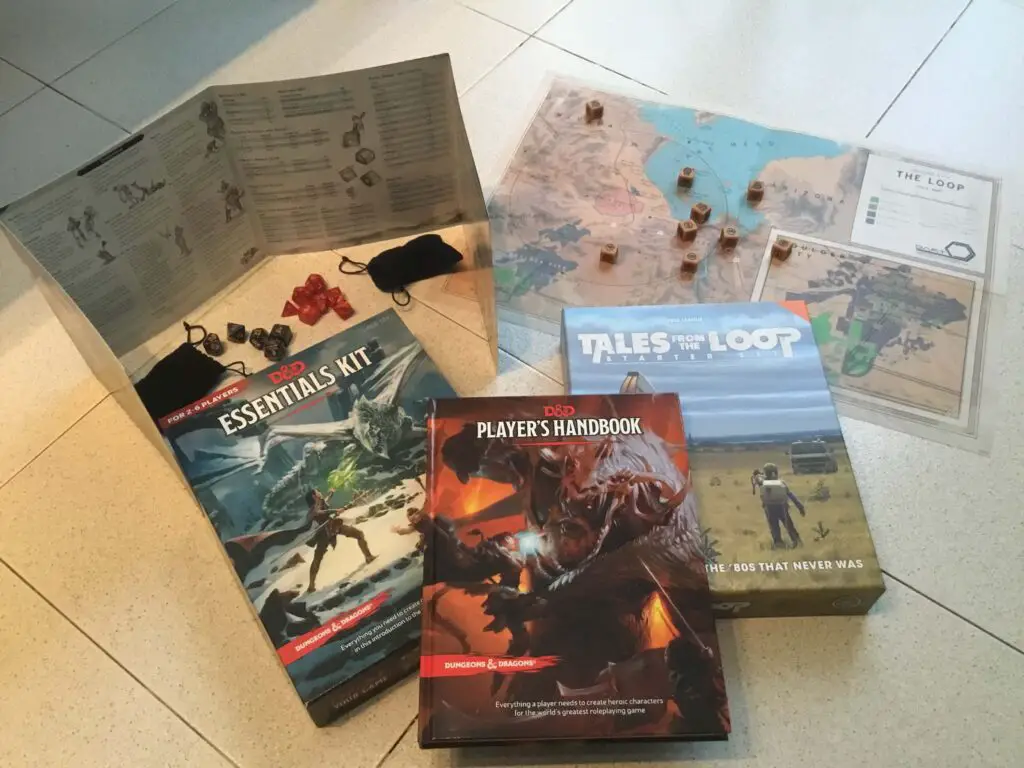Role play is one of my favourite EFL/ESL learning methods. Around the world, teachers use it in their classes to improve speaking confidence and fluency.
But it’s not always great. Done in the wrong way, it can become boring and regimented, with students just going through the motions and missing out on all the benefits.

Keeping role-play activities interesting is the key to their success. This article has 9 steps telling you how to do just that. And don’t miss the bonus tip at the end which can transform your classes (small groups only) into unforgettable experiences!
If you’re not sold on role play yet, or aren’t quite sure how it can benefit EFL/ESL students, read my post: Why All EFL/ESL Teachers Should Use Role Play Activities.
1. Establish clear expectations
Before you do any role-play activity with students, they should all be clear what it entails. Knowing the point of the activity and how to succeed in it helps students feel confident that what they’re doing is right.
I recommend doing a few example scenarios first, with you and another student. Let them know what you expect in terms of duration, type of language used, and how free they can be with the direction of the scenario and their own actions.
With all ages, but especially children and teenagers, setting clear boundaries early on is vital. Role plays can get quite loud and rowdy, so define what is acceptable behaviour and what isn’t.
To learn how to use role play effectively with different age groups, check out my articles: How to Teach Children EFL/ESL With Role Play: Best tips and Teaching EFL/ESL to Teenagers & Adults With Role Play.

2. Choose scenarios with a clear aim
Just like setting clear expectations for the role-play activity in general, each scenario you choose should have a clear aim, with the roles working towards a purpose.
If a student doesn’t know what they’re supposed to be achieving in the role play, they will drift and get bored. Consider the difference between these two scenarios.
Scenario 1:
- Role A: You are a student who didn’t do the homework
- Role B: You are a teacher who set the homework, but the student didn’t hand it in.
Scenario 2:
- Role A: You are a student who didn’t do the homework and you need to convince the teacher to give you an extra day.
- Role B: You are a teacher who set the homework, but the student didn’t hand it. Giving the student an extra day means you’ll get behind on classwork.
Do you see how scenario 2 is better? It gives each student an aim to work towards, meaning they always know what to do. Scenario 1 is less defined, and can easily lose focus.
Now, this doesn’t mean each student in the scenario will necessarily achieve the aim in their role. Maybe the teacher refuses to give the student an extra day.
Of course, negotiation and compromise are required, but there’s no “winner” in role plays. When setting expectations, make sure students know that it’s not competitive.
3. Choose engaging scenarios
The best scenarios are those you design specifically for your group of students.
A scenario about animals searching for a lost friend in the forest might be wonderful for a group of children, but for a serious business English class, not so much.
But no matter the students in the group, all scenarios should be engaging. This could mean they’re funny, tense, uplifting, unusual, or even mysterious.
There are plenty of boring role-play scenarios out there that go through bland, everyday situations. That’s fine to an extent. Students should learn useful, common language for the kind of situations they’ll experience in their lives.
But why not spice things up?
Instead of a scenario of a customer buying basic items from a market stall and dealing with prices, why not have a second market stall compete for their purchases. They can haggle with prices, explain why their goods are better, all the while using the same useful language.
For some brilliant role-play scenario ideas, check out my articles: 5 Exciting EFL/ESL Role Play Scenarios for Kids (+ tips) and 5 Engaging EFL/ESL Role Play Activities for Adults (+ tips).
4. Give structure, but not too much
Role plays are spontaneous and improvised. However, just letting students get on with it isn’t always optimal. Sometimes you need to provide them with some language beforehand so they don’t run into too many situations where they can’t express themselves.
Some targeted structuring is needed in most cases. If the scenario is about exchanging money, you might want to brainstorm a few common phrases and go over how to say different monetary amounts (e.g. 5 dollars and forty-nine cents).
But be careful. The number one way of killing interest in role play is by over-structuring. If you make it feel like a script, with every sentence laid out in advance, students won’t feel engaged.
There’s a balance here. I prefer to prepare a small number of stock phrases and have them on display, with no requirement to use them. Then I’ll act as a resource for students during the activity itself.
5. Allow divergence and spontaneity
Emergent and improvised language often diverges from the original aim of the scenario. This is mostly fine.
If you need students to practice specific phrases and structures, then role play isn’t the right activity. While it’s right to provide useful language and state clear role aims, strictly enforcing them inhibits the spontaneous speech and creativity that naturally comes out.
So if students go off the rails a little, let them. Remember that the point of role play is to promote fluency and confidence. It’s more interesting for them to customise the scenario and make it unique to them.

Saying that, if students immediately change the scenario and start doing something completely different, changing their roles and abandoning the whole premise, then you should stop them and get them to start again.
If you set out clear expectations at the beginning, students should be comfortable with how far they can go off topic.

6. Give plenty of freedom but know when to intervene
I generally play a passive role when students are doing role plays. I’m on hand to support them when they’re struggling to find language, but I find it best to let them get on with it.
Having a teacher constantly breathing down your neck while you’re trying to speak spontaneously makes the whole thing quite stressful. Less pressure means more freedom of expression.
However, sometimes the teacher needs to intervene. This can be to spur students into action when they’re not sure what to do (you can avoid this with a scenario that has clear aims), or to stop things getting out of control.
As long as students are roughly on track, keep a light touch.
7. Avoid over-correcting
Related to the last point, over-correcting is an engagement killer.
It’s quite simple. Students can’t improve their confidence and fluency when the teacher corrects every other word they say. Not only does it make them feel inadequate, but it disrupts the flow of the scenario, making it frustrating for everyone involved.

I hardly ever correct students during role plays. As long as they’re able to communicate their ideas and they aren’t making repeated basic errors, it’s much better to let them flow.
What I recommend instead is paying attention to the errors and noting them down. You can identify weaknesses and work on them later in a more structured activity.
8. Encourage physical enactment
One great way of making role play more interesting for all students is to allow physical enactment and the use of props.
Children especially are naturals at this kind of thing. A ruler can be a magic wand, or a piece of paper can be a dinner plate. Let them get up and about, using their physical actions to support the language they’re using.

And it’s not just kids. Teenagers and adults can benefit from this, too. A more active scenario captures their interest more than sitting around and talking.
Obviously, be mindful of behaviour. Some students may see this as an excuse to run around and be silly. Others may try to do the scenario using mime instead of English. I refer you back to the first point: establish clear expectations about what is acceptable and what is not.
9. Remove the performance aspect
Without the pressure of an audience, most students engage more with the scenarios and feel safer expressing themselves and taking risks.
Sometimes it’s tempting to turn a role play into a performance. Most of the time it’s best to avoid this. Improvisational performance is very stressful and only the most confident students really benefit. For everyone else, it adds stress and wipes out any engagement they had.
If you want to get students to perform, it’s much better to use a dramatization or simulation activity where students follow a script.
To learn the difference between role play and scripted activities, check out my post: Dramatization vs Simulation vs Role Play: Guide for EFL/ESL.
Conclusion
Making role play interesting boils down to one key concept: freedom within defined limits.
Set the boundaries early on, and give enough structure for students to have direction and clarity. Then you let them work within those boundaries, only intervening when they step outside.
Social pressure is the enemy. A gentle touch is necessary to let students grow in confidence and fluency.
Now with this new knowledge, you can go and do some amazing role playing!
Bonus tip: Role-playing games
This tip is for teaching individuals and small groups (2-6 students) when you don’t have a fixed curriculum. For example, when private tutoring.
When I discovered the joy of tabletop role-playing games, I realised I could use them in my English lessons. They’ve transformed my classes into unbelievable experiences for my students.
What is a tabletop role-playing game (TTRPG)? It’s essentially a series of linked scenarios, often in a fantasy world, where players play the role of a character and say/act what they would do in the scenario, with results often determined by dice.

Dungeons & Dragons is by far the most famous and popular example. In an English class, they’re brilliant for discovering new vocabulary, developing fluency, and introducing new forms of language. You can use it to practice all English skills and students feel invested and excited throughout.
I can’t recommend them highly enough!









